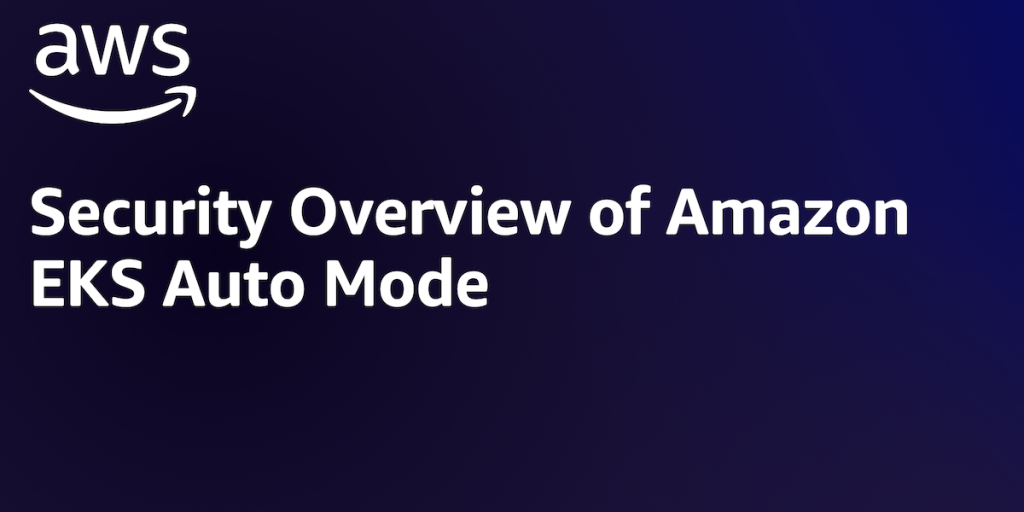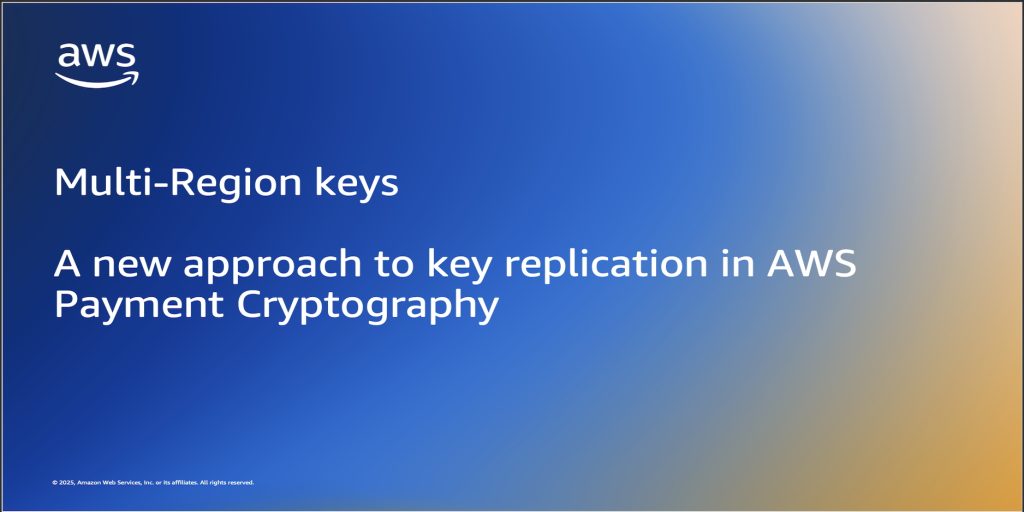AWS Security Blog
Category: Intermediate (200)
New AWS whitepaper: Security Overview of Amazon EKS Auto Mode
Amazon Web Services (AWS) has released a new whitepaper: Security Overview of Amazon EKS Auto Mode, providing customers with an in-depth look at the architecture, built-in security features, and capabilities of Amazon Elastic Kubernetes Service (Amazon EKS) Auto Mode. The whitepaper covers the core security principles of Amazon EKS Auto Mode, highlighting its unique approach […]
How to develop an AWS Security Hub POC
The enhanced AWS Security Hub (currently in public preview) prioritizes your critical security issues and helps you respond at scale to protect your environment. It detects critical issues by correlating and enriching signals into actionable insights, enabling streamlined response. You can use these capabilities to gain visibility across your cloud environment through centralized management in […]
Minimize risk through defense in depth: Building a comprehensive AWS control framework
Security and governance teams across all environments face a common challenge: translating abstract security and governance requirements into a concrete, integrated control framework. AWS services provide capabilities that organizations can use to implement controls across multiple layers of their architecture—from infrastructure provisioning to runtime monitoring. Many organizations deploy multi-account environments with AWS Control Tower, or […]
Multi-Region keys: A new approach to key replication in AWS Payment Cryptography
In our previous blog post (Part 1 of our key replication series), Automatically replicate your card payment keys across AWS Regions, we explored an event-driven, serverless architecture using AWS PrivateLink to securely replicate card payment keys across AWS Regions. That solution demonstrated how to build a custom replication framework for payment cryptography keys. Based on […]
Navigating Amazon GuardDuty protection plans and Extended Threat Detection
Organizations are innovating and growing their cloud presence to deliver better customer experiences and drive business value. To support and protect this growth, organizations can use Amazon GuardDuty, a threat detection service that continuously monitors for malicious activity and unauthorized behavior across your AWS environment. GuardDuty uses artificial intelligence (AI), machine learning (ML), and anomaly […]
Overview of security services available in AWS Dedicated Local Zones
When modernizing applications, customers in regulated industries like government, financial, and research face a critical challenge: how to transform their systems while meeting strict digital sovereignty and security compliance requirements. A common misconception tied to this is that data must be moved to an AWS Region to fully use Amazon Web Services (AWS) security services. […]
Amazon disrupts watering hole campaign by Russia’s APT29
Amazon’s threat intelligence team has identified and disrupted a watering hole campaign conducted by APT29 (also known as Midnight Blizzard), a threat actor associated with Russia’s Foreign Intelligence Service (SVR). Our investigation uncovered an opportunistic watering hole campaign using compromised websites to redirect visitors to malicious infrastructure designed to trick users into authorizing attacker-controlled devices […]
Use scalable controls to help prevent access from unexpected networks
As your organization grows, the amount of data you own and the number of data sources to store and process your data across multiple Amazon Web Services (AWS) accounts increases. Enforcing consistent access controls that restrict access to known networks might become a key part in protecting your organization’s sensitive data. Previously, AWS customers could […]
Malware analysis on AWS: Setting up a secure environment
Security teams often need to analyze potentially malicious files, binaries, or behaviors in a tightly controlled environment. While this has traditionally been done in on-premises sandboxes, the flexibility and scalability of AWS make it an attractive alternative for running such workloads. However, conducting malware analysis in the cloud brings a unique set of challenges—not only […]
New AWS whitepaper: AWS User Guide to Financial Services Regulations and Guidelines in Australia
Amazon Web Services (AWS) has released substantial updates to its AWS User Guide to Financial Services Regulations and Guidelines in Australia to help financial services customers in Australia accelerate their use of AWS. The updates reflect the Australian Prudential Regulation Authority’s (APRA) publication of the Prudential Standard CPS 230 Operational Risk Management (CPS 230), which […]








